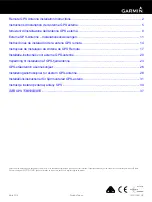
OBID
®
Antenna Manual
ID RW24
FEIG ELECTRONIC GmbH
Seite 6 von 15
h80391-1e-ID.doc
2.3. Methods of manufacture
In principle, several methods of manufacture may be used to produce an antenna. In the following,
we will present and compare three different methods.
2.3.1. Coiled wire antenna
The coiled wire antenna consists of one single lead resp. insulated wire, which is, according to the
necessary number of turns, wound around a frame or something similar .
This kind of antenna is easy to manufacture, but, due to the fact that the windings are situated di-
rectly side by side, the coil capacity is rather high. As mentioned before, this may lead to an appar-
ently higher inductance for the reader, but the parasitic portion does not make a contribution to
higher range.
In the case of manually wound antennas, the various winding layers may differ from antenna to an-
tenna, due to tight or loose winding. Thus, even antennas of the same size and number of windings,
may have different inductances.
2.3.2. Flat strip cable antenna
Depending on the necessary number of turns, one or more layers of a flat strip cable are put on a
carrier plate or wound around a frame. After that, the two ends of the cable are connected with each
other in a staggered arrangement, so that a conductor loop with the appropriate number of turns is
created. Connections are formed by the first lead of the one end and the last lead of the other.
In order to simplify manufacture, this interlaced connection does already exist on the board of the
automatic antenna tuner ID AT for 26-wire flat strip cable. Furthermore, there is a small connection
board ID ANT.AP, which has been especially designed for interlaced connection of 26-wire-flat strip
cable. For both boards, the desired number of turns may be selected by jumpers.
2.3.3. Transmission antenna
In principle, the transmission antenna consists of one conductor loop with only one turn. The induc-
tance of this turn, together with the appropriate capacitor, forms the 125 kHz-transmission resonant
circuit. The relatively low inductance of this transmission resonant circuit is then transformed by a
translator into the necessary inductance of the reader’s working range. Since the translator also
transforms the current in the transmission resonant circuit to a higher level according to its turn ratio,
the capacitors have to be suitable for stronger currents, such as 4A. The conductor loop should have
a minimum diameter of 16 mm² . We recommend a construction made of copper pipe.

































